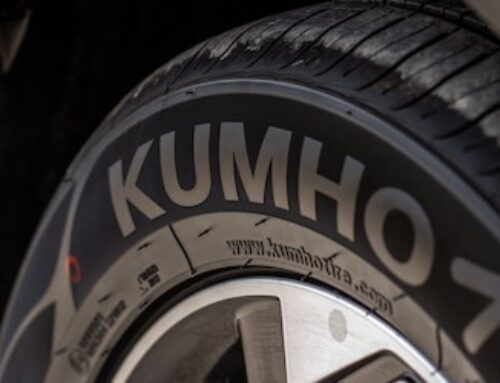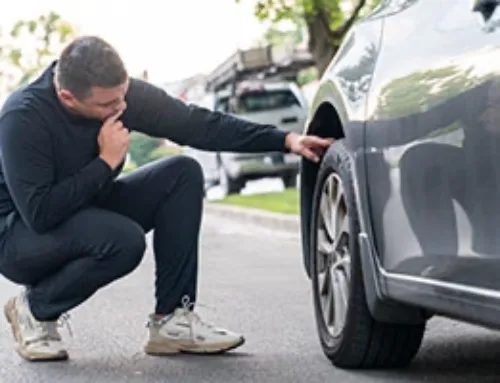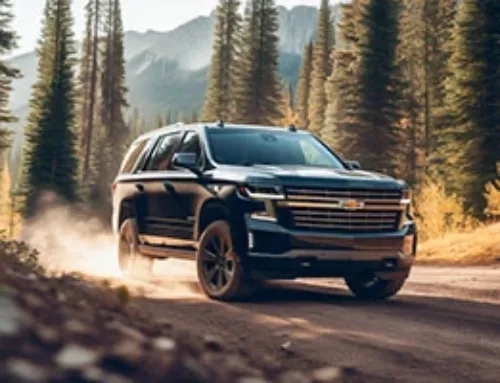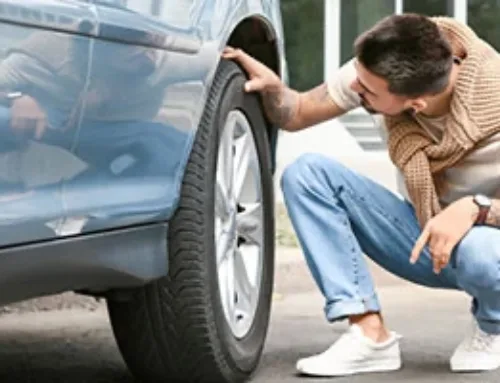Table of Contents
Been thinking about changing the size of your vehicle’s tires? Well, putting bigger tires on your car or light truck will change more than just how it looks. With today’s modern cars, this seemingly simple change is anything but; many factors go into this decision. Keep reading to find out all the pros and cons of changing your tire size.
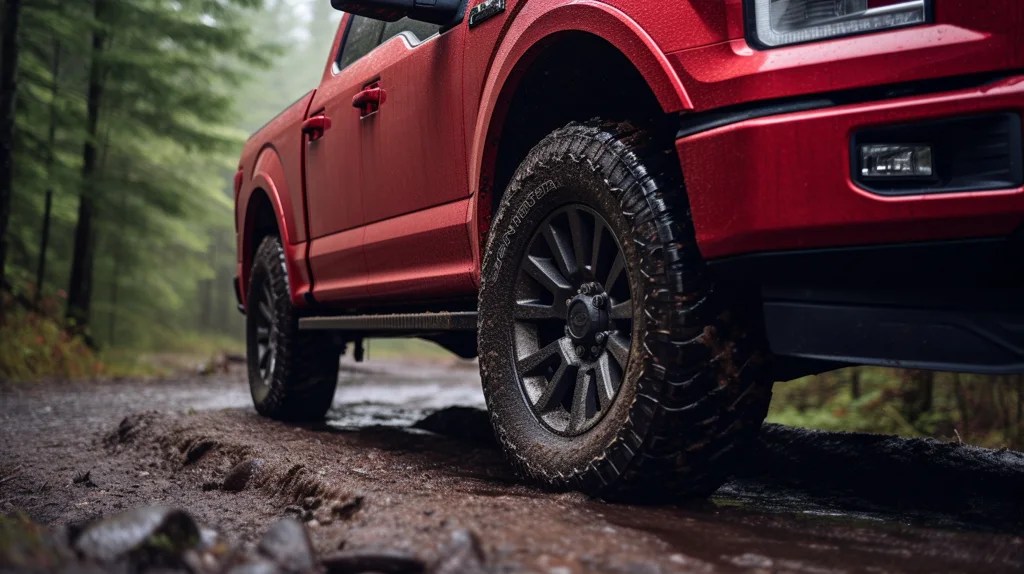
Can you put bigger tires on your vehicle?
You can put bigger tires on your vehicle, but it’s best to do your research first to know what you’re getting into. After installing larger tires, many people are surprised at all the complex changes to their vehicles. Tire size can have an effect on steering, traction, fuel economy, braking system, and even more.
Things to consider when installing larger tires
There’s a reason why vehicles are manufactured with specific tire sizes in mind. Most cars have powerful onboard computers that monitor all sorts of things based on your vehicle’s tire diameter, wheel size, etc. Different tire sizes are going to change the calculations used to monitor things such as speed, mileage, tire pressure, etc.
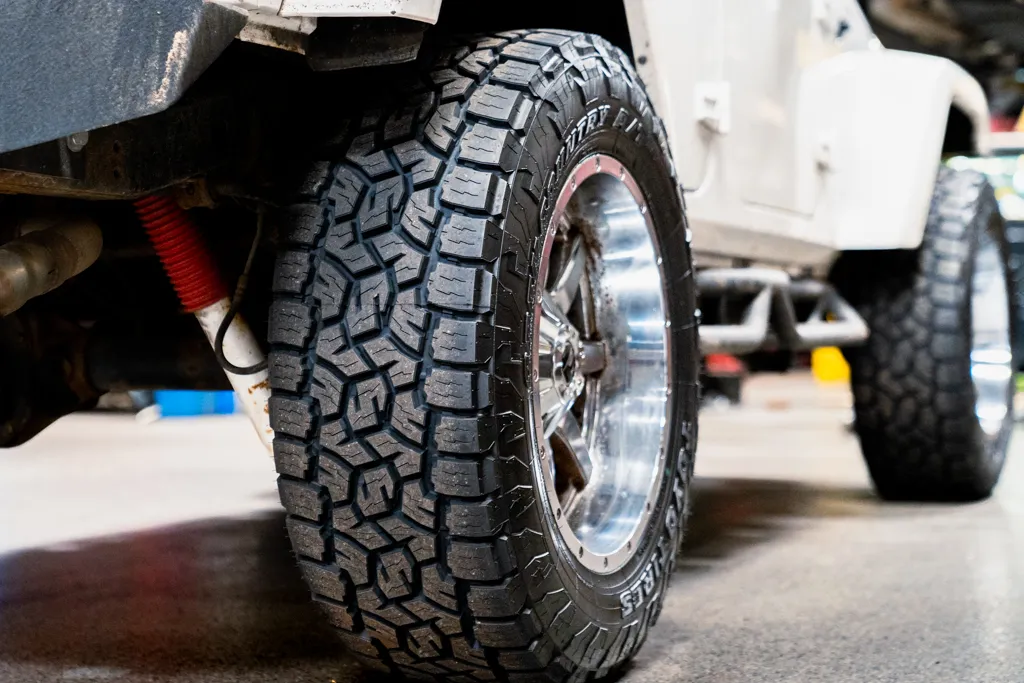
If you want to alter your tire size, put on larger wheels or are interested in upsizing, this can have a lot of unintended consequences for your vehicle. Many of the electronic safety aids in your vehicle, such as the anti-lock braking system and traction control, may not function normally. But there are plenty of good reasons to put larger tires on your car.
Wheels vs. tires
Wheels and tires are terms that are often used interchangeably, but it’s important to understand the difference.
Wheels are the metal cylinders that attach to the axle via the lug nuts, which seem to require Herculean strength to remove. The inner and outer edges of the wheels are known as rims.
The tire refers to the rubber piece which fits onto the wheel and fills with air. Tires are the only part of the car which actually touch the ground (unless you have seriously screwed up), and so they provide all of the traction so important for braking, cornering, handling, and the like.
Don’t let the best tire deals & tips roll by!
Sign up for our newsletter
Bigger tires, bigger wheels, or both?
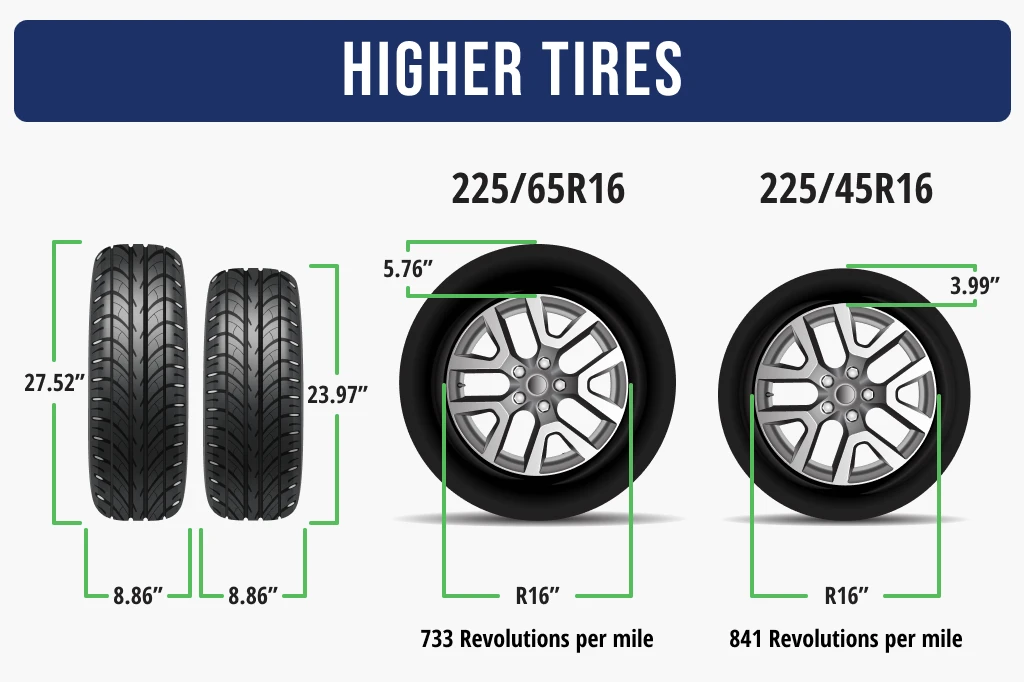
If you’re looking to purchase new tires, know that there are lots of different combinations. Keeping your wheel size the same is possible, but putting large tires on them is possible.
It’s also possible to put bigger wheels and small tires on. It’s also possible to make them both bigger… the possibilities are endless, and each new configuration affects your car in different ways.
Wider tires
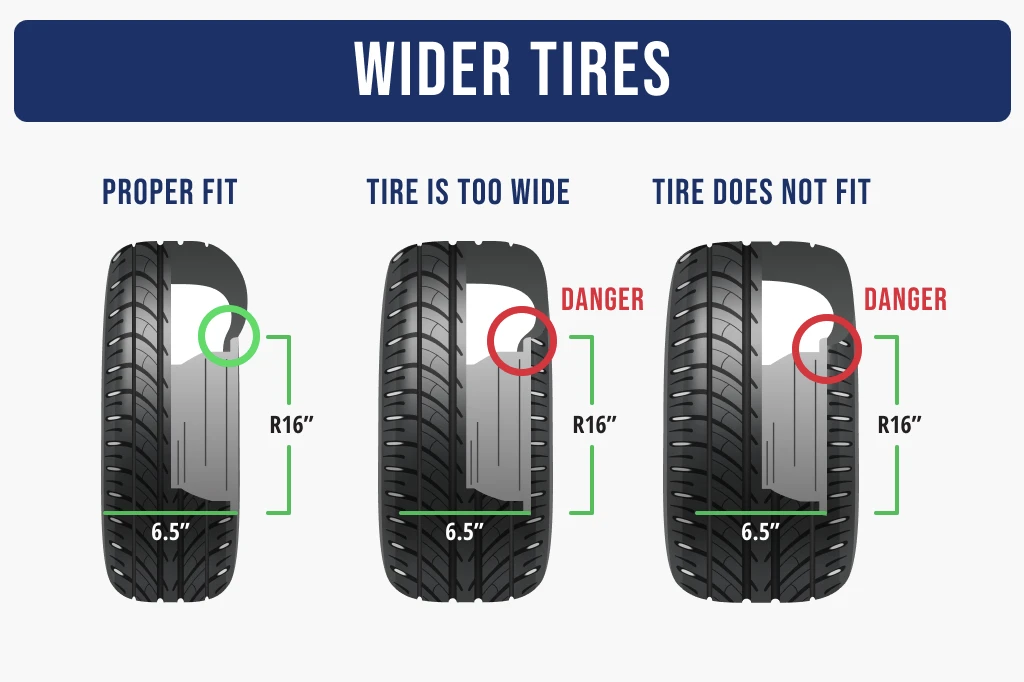
Not only can you mount larger tires, but wider tires as well. Installing tires that are wider than your wheels won’t work, so if you want to make that change, you’ll need to invest in both new tires and new wheels. Wider tires are often referred to as oversized tires.
Truck tires are a specific type of large tire with a certain height and weight load. Truck tires don’t determine how wide the tire is or the tread style.
Pros of bigger tires
- Increased ground clearance
One of the most obvious pros of larger tires is the greater ground clearance your vehicle will have. Big tires lift the vehicle frame off the ground, which means you can handle rough terrain and off-roading. - More comfort
A larger tire has a larger sidewall, which is a cushion for the vehicle. The sidewall can compress as the tires move over rocks, cracks, bumps, etc., which means a smoother ride. This is great for off-road, light trucks, and passenger vehicles. - Longer lasting tires
As you increase the tire size, a smaller percentage of the tread is actually making contact with the ground. Over the same distance, this means that the larger tires will perform fewer revolutions which translates to less tread wear. - Better off-road performance benefits
If you choose wider or thicker tires, you’ll definitely notice a difference in off-road performance. Oversized tires mean better ground clearance and increased traction from the larger contact patch of the tire. All that extra traction means a significant increase in handling performance capabilities.
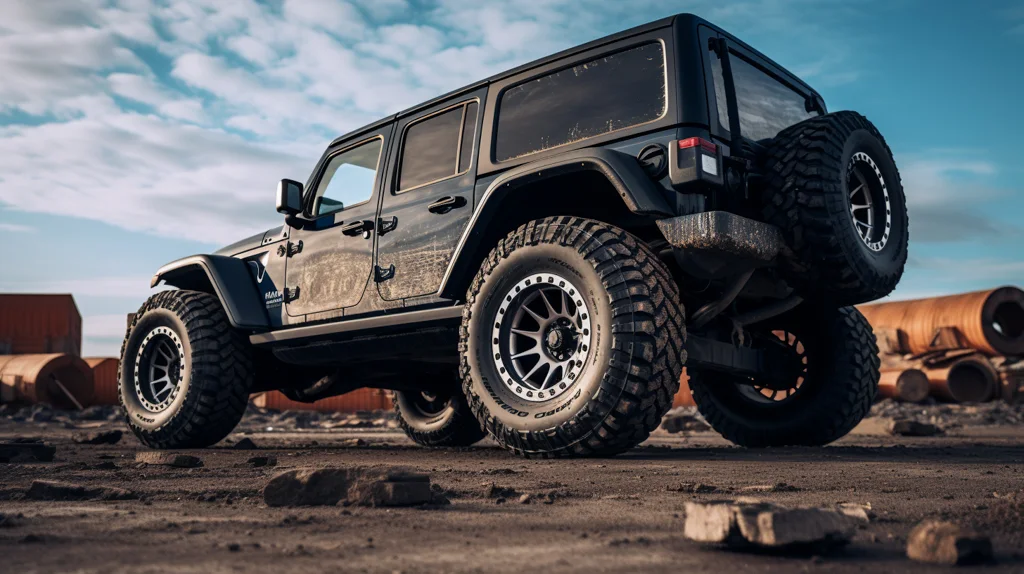
Cons of bigger tires
- More expensive
Generally, the larger the tire size, the more expensive it is. - Lower fuel efficiency
Bigger tires are heavier, plain, and simple. They also will increase your vehicle’s rolling resistance, which is a measure of how much energy it takes to get the wheels spinning and how much they resist spinning freely. Both of these things affect fuel economy negatively. - The speedometer will be off
Your speedometer measures the speed you are traveling based on the circumference of your tires and the number of revolutions they make, so if you change tire sizes, this will throw off the calculations. Of course, it won’t affect your speed, but you must recalibrate your car’s computer to account for the difference. - Difficulty steering
When you have more traction from wider tires, this will also make it slightly more difficult to steer. This is not a major issue, but the difference will be noticeable at first before you adjust.
Low-profile tires
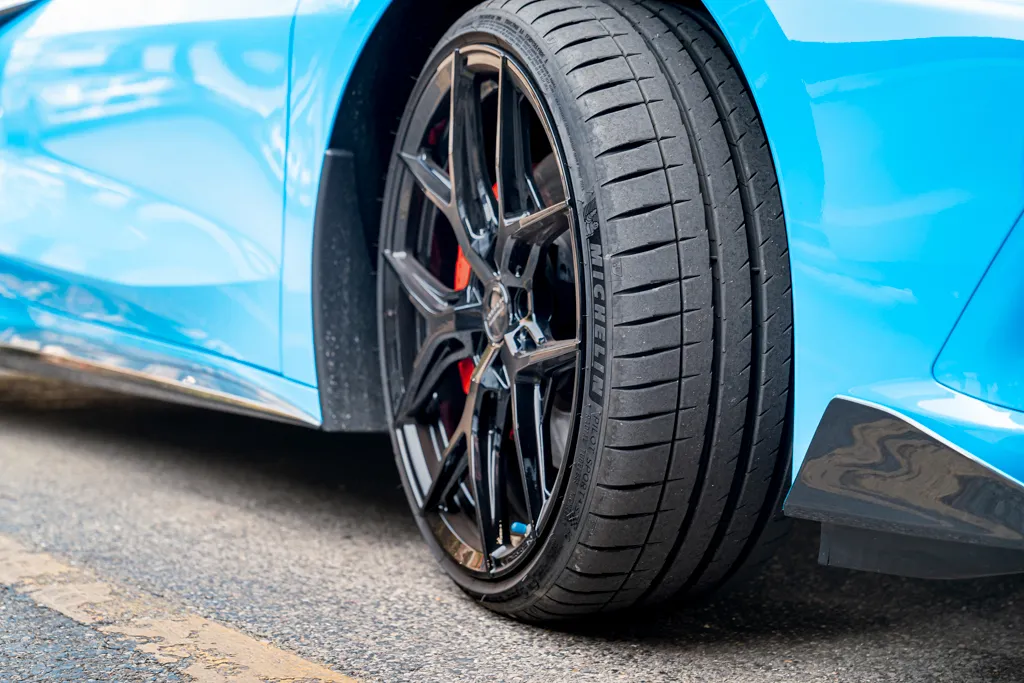
Low-profile tires, sometimes called up-sized tires, are a very common adjustment for car owners. This is when a set of larger wheels is installed with a set of smaller tires. This way, the wheels and tires together have the same circumference, so there will be no issues with the speedometer and odometer.
The good stuff
- Improved handling and traction for your vehicle’s cornering, turning, etc
- Increased stability when driving at high speeds
- More steering precision
- Sleek, fashionable look
The not-so-good stuff
- Less comfortable due to smaller and stiffer sidewalls (bumpy)
- More expensive tire services
- Less ability to handle poor road conditions
Frequently Asked Questions
Are bigger tires always wider?
No, tires can be bigger in the sense of being taller without being wider. This means you can put bigger tires on the same wheels and rims you originally had.
Is extra ground clearance important?
For most city dwellers who drive on a paved road surface, the majority of the time, higher ground clearance is not necessary. However, for those drivers who often go off-roading or drive on dirt roads, through fields, etc. then, it may help avoid damage to the chassis and underside of the vehicle.
Putting bigger tires on a car: is it safe?
While putting bigger tires on your car is generally considered safe, it can come with the above-mentioned issues. Bigger tires affect all sorts of things, including traction control and braking systems, with important safety features.


